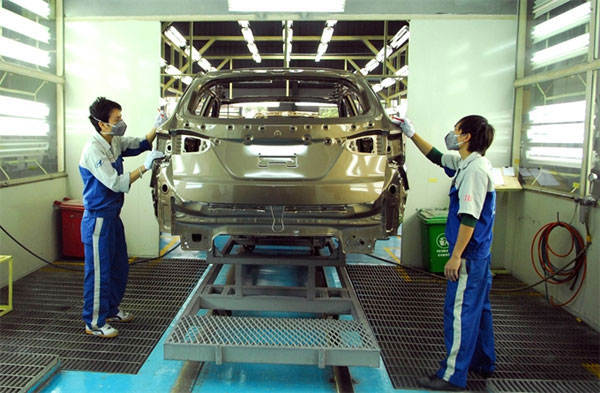|
Supply
industry needs to tap the global chain
Technological and financial limitations are major development
constraints for the local supply industry, Bui Quang Chuyen, Chairman of the
Viet Nam Engine and Agricultural Machinery Corporation (VEAM), tells
VietnamPlus.
Where does the Vietnamese supply industry stand now?
The
supply industry has progressed, but not yet caught up with the country’s
development demands. This is partically due to limited technological
standards and difficulties in finances.
In
2015, the Government issued Decree 111/CP that aimed to give fresh growth
impetus to the industry, but many shortcomings persist, including inadequate
the lack of preferential interest rates on loans for investment projects.
In
addition, many localities do not have policies to encourage businesses to
invest in the supply industry. There is no support for investment in
technology, in technology transfer, or preferential tax policies, especially
for agricultural machinery. For instance, there is no import tax refund on materials
and fuels used to make agricultural machinery and other supply industry
items.
FDI businesses regularly complain that it is difficult to find
suppliers (of spare parts, accessories etc.) in Viet Nam. What can we do to
be a bigger part of the production chain?
To
join in the global supply chain, particularly in the automobile industry,
hi-tech production knowledge is required so that we are competitive in terms
of product quality, price, packaging and delivery. There are many other
factors as well.
VEAM
currently has three companies in the supply industry; Machinery Spare parts
No.1, Pho Yen Mechanical JSC and Song Cong Diesel Company. About 70 per cent
of the companies’ output is supplied to Japanese motorbike makers.
We
know that the businesses will have to invest in high-tech machinery, with
accuracy and capacity of foremost importance.
To
acquire and use advanced technologies, VEAM has to send its staff and workers
to training courses in foreign countries and hire experts to directly train
workers here.
Were there foreign businesses specialising in agricultural
machinery that bought VEAM shares during its recent initial public offering
(IPO)?
Most
of the 240 investors who took part in the IPO on August 30, 2016 were
financial companies and several were involved in both the financial and
automobile industries.
In
fact, there were not any investors in agricultural machinery who bought VEAM
shares because, even in Japan and the Republic of Korea, a lot of capital is
required and profitability is not high in this industry.
However,
we at VEAM also see it as a political task, and we will have to meet the
demand for “Made in Viet Nam” agricultural machinery.
You say foreign businesses are not interested in agricultural
machinery, but in fact, there is fierce competition from Chinese products.
What do you think about this issue?
In
the area of agricultural machinery, our strategic focus is on quality. To
compete with cheap machines imported from China and India, we seek to develop
our capacity and high-tech capabilities.
VEAM
will not compete with similar products from China and India on price.
Similarly, on the service side, we will focus on maintenance and meet the
demands of users.
VEAM enterprises have been part of big joint ventures
alongside Honda, Toyota and Ford… What can be done to go from this stage to
becoming owners and access sci-tech advances? And can they join the global
supply chain?
VEAM
has sent its staff to a number of foreign companies, including Honda Vietnam
and Toyota Motor Vietnam (TMC), to hold leadership roles and serve as members
of executive boards in such joint ventures. Many VEAM staff are playing the
role of managers or team leaders in production lines.
In
Ford Vietnam, from the General Director to other key positions, there are
Vietnamese personnel, therefore both grasps of technology and technology
transfer are possible.
However,
we are mainly interested in automobiles. We will focus on gaining experience,
learning technologies and investing in the sector. As for motorbikes, I think
volumes will fall after 2020 because the market will be saturated.
The country’s automobile industry is facing a lot of
difficulties; isn’t it a bit adventurous for VEAM to continue focusing on
this area?
VEAM
has an auto factory in central Thanh Hoa Province, which is set to grow 20-30
per cent annually, mainly meeting the market demand for trucks. Our strategy
is to invest in production through raising the localisation rate and
improving the quality of trucks. In the future, we expect to manufacture
buses. Trucks and buses are the two strategic vehicles for the future, as
identified by the Government.
For
small sedans, VEAM will continue participating in financial investments with
joint ventures, such as TMV and Honda.
VNS
|
Thứ Bảy, 11 tháng 2, 2017
Đăng ký:
Đăng Nhận xét (Atom)

Không có nhận xét nào:
Đăng nhận xét